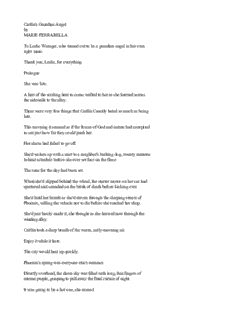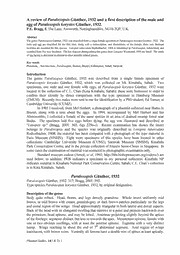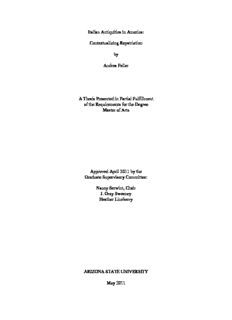
Contextualizing Repatriation by Andrea Feller A Thesis Presented in Partial Fulfillment of th PDF
Preview Contextualizing Repatriation by Andrea Feller A Thesis Presented in Partial Fulfillment of th
Italian Antiquities in America: Contextualizing Repatriation by Andrea Feller A Thesis Presented in Partial Fulfillment of the Requirements for the Degree Master of Arts Approved April 2011 by the Graduate Supervisory Committee: Nancy Serwint, Chair J. Gray Sweeney Heather Lineberry ARIZONA STATE UNIVERSITY May 2011 ABSTRACT From inception, the earliest museums in Europe were a haven for artifacts, many of which represented world cultures within its walls. The tradition of encyclopedic collecting characterized European museums and U.S. institutions modeled themselves after this example. In the 20th century, defining cultural property, in the form of excavated objects, became a priority for many nations and resulted in the scrutiny of ancient artifacts, in particular. This led to the establishment of international protocols which sought to protect items during times of both peace and war. Despite international legislation, the trade of illicit antiquities continued. A major advocate for repatriation, the nation of Italy aggressively sought return of many objects from antiquity and recently approached the Metropolitan Museum of Art regarding several items whose provenance was suspect. Ultimately the conflict was resolved through The Metropolitan Museum of Art-Republic of Italy Agreement of February 21, 2006, which transferred the title of six antiquities to Italy in return for long term loans of equivalent objects to the museum. The landmark agreement represents a mutually profitable resolution to a situation potentially plaguing thousands of institutions worldwide. The implications of replication of the agreement can potentially change how museums, nations and the public understand concepts of ownership and may reduce the role of permanent collections in favor of sharing, rather than possessing, world heritage. i ACKNOWLEDGMENTS This thesis would not have been completed without the guidance of Dr. Nancy Serwint, Dr. J. Gray Sweeney and Heather Sealy Lineberry. I would also like to thank my husband, Benjamin, my sisters and mom. My friends also played a significant role in my success a special thanks to Becky Pratt and the late Susan Ables. ii TABLE OF CONTENTS Page LIST OF FIGURES .................................................................................................... iv CHAPTER 1 REPATRIATION: MUSEUMS AND DISPUTED OBJECTS ........... 1 2 LEGISLATION: CULTURAL PROPERTY ...................................... 31 INTERNATIONAL PROTOCOLS ................................................. 36 UNITED STATES PROTOCOLS ................................................... 61 3 STOLEN OR NOT: THE METROPOLITAN MUSEUM OF ART AND COLLECTING..................................................................... 73 4 REPATRIATION IN ACTION: A CASE STUDY ............................ 98 PUBLIC ANNOUNCEMENT OF THE ACQUISTION ............. 102 THE METROPOLITAN MUSEUM OF ART-REPUBLIC OF ITALY AGREEMENT .................................................................. 118 5 RE-EVALUATING OWNERSHIP: WHERE DO WE GO FROM HERE? .......................................................................................... 125 REFERENCES ...................................................................................................... 141 iii LIST OF FIGURES Figure Page 1. Euphronios Krater ............................................................................. 140 iv Chapter 1 REPATRIATION: MUSEUMS AND DISPUTED OBJECTS There are an estimated 17,500 museums in the United States. From small historical sites to massive institutions dedicated to the arts, science and history, most of these organizations collect and display objects. 1 Innumerable artifacts belong to these institutions. The Metropolitan Museum of Art, one of the premier art establishments in the world, possesses over 200,000 works.2 Many artifacts representing ancient cultures have become iconic objects at the center of passionate ownership disputes. One particularly emblematic work of art in the Metropolitan collection was surrounded by controversy until recently. The object is a rare, almost complete red-figure Greek ceramic vessel. Euphronios, an Athenian artist working from c. 520 to 470 B.C.E., painted the krater, which was purchased by the Metropolitan in 1972. 3 Only eighteen vases survive with his signature, 1 The Metropolitan Museum of Art will be referred to as the Metropolitan through out this thesis. American Association of Museums, “Museum FAQ,” American Association of Museums, http://www.aam-us.org/aboutmuseums /abc.cfm#how_many (accessed July 25, 2010). 2 Metropolitan Museum of Art, “Works of Art,” Metropolitan Museum of Art, http://www.metmuseum.org/Works_of_Art/collection_database/listview.aspx?pag e=1&sort=0&sortdir=&keyword=&fp=1&dd1=0&dd2=0&vw=1 (accessed August 26, 2010). The Metropolitan‟s online catalogue contains 208,978 entries. The site states not all collection items are currently available online, implying there are many additional works not currently included in the online catalogue. 3 The vessel, signed by Euphronios as painter and Euxitheos as potter and purchased by the Metropolitan, came to be identified as the Euphronios Krater, embodying both a description and one of the official names of the work of art. 1 identifying him as painter or potter. Deviating from the official story presented by the Metropolitan of the work coming from a private European collection, The New York Times identified a clandestine excavation north of Rome in 1971 as the source of the vessel.4 The allegations by the newspaper and the absence of export documentation clearly demonstrates the need for new laws protecting cultural property. Concurrent to the purchase of the Euphronios Krater, the 1970 UNESCO Convention developed to prevent the procurement of illegally excavated objects through export laws. Ratified by the Senate and under review in the House of Representatives, the new international legislation required proper documentation to prevent illegal export of items. If the Convention had been enacted in the U.S. at the time of the acquisition of the krater, the need for additional records, such as export permits, may have prevented the purchase, however, since that was not applicable, the museum maintained the legality of the acquisition for many decades.5 The vessel is also referred to as the Sarpedon Krater. This second title refers to the scene from Homer‟s Iliad depicted on one side of the vessel. 4 Nicholas Gage, “How the Metropolitan Acquired „The Finest Greek Vase There Is,‟” The New York Times, sec. 1, February 19, 1973; Proquest Historical Newspapers The New York Times (1851-2006) http://www.proquest.com.ezproxy1.lib.asu.edu/ (accessed December 27, 2010). The newspaper conducted an investigation to determine the origins of the vessel by sending a team to Italy to interview a variety of individuals. 5 David Shirley, “Dillon, Metropolitan Present, Terms Vase Purchase „Legal,‟” The New York Times, March 1, 1973; Proquest Historical Newspapers The New York Times (1851-2006) http://www.proquest.com. ezproxy1. lib.asu.edu/ (accessed December 27, 2010). See Ashton Hawkins, “The Euphronios Krater at the Metropolitan Museum: A Question of Provenance,” Hastings Law Journal 27 (1975-1976): 1163-1181. 2 Publicity surrounding the vessel prompted an investigation by Italy into the origins of the krater. Despite years of investigation, incontrovertible evidence remained elusive. Italian resolve to determine ownership waned until the search was renewed when 3,800 objects, tens of thousands of documents and 4,000 photographs were seized from an art warehouse in Switzerland rented by Giacomo Medici in 1995. These items provided the means to trace antiquities from their original location, through restoration and finally to the collections of museums worldwide. The Italian carabinieri, as a result, concluded the inquiry which had begun in the 1970s, and requested the return of the krater and additional artifacts from the Metropolitan Museum of Art.6 These objects included a Laconian kylix, a red-figured Apulian dinos attributed to the Darius Painter, a red-figure psykter decorated with horsemen, a red-figured Attic amphora by the Berlin Painter and fifteen pieces of Hellenistic silver. The thirty-five year dispute over the krater ended with “The Metropolitan Museum of Art-Republic of Italy Agreement of February 21, 2006”. This unprecedented accord transferred the title of the six contested antiquities to Italy. In return, the Metropolitan was absolved of any wrong doing and would receive reciprocal long term loans for the repatriated objects that are of equivalent significance.7 Philippe de Montebello, the former Director of the Metropolitan, 6 The documents and the reasons leading the Metropolitan to return the Euphronios Krater and the five additional items will be discussed in Chapter 4. 7 The agreement between the Metropolitan and Italy will be the subject of Chapter 4. 3 praised the arrangement as evidence of Italian generosity, for more works were loaned than the museum returned.8 The return of the artifacts to Italy highlights issues regarding cultural property and repatriation. Demands by the Italian Ministry of Culture for the return of objects alters how nations and scholars perceive the ownership of ancient artifacts and undocumented antiquities.9 In a globalized world, a precarious balance must be negotiated between claims for repatriation and public access, as they have major consequences for the academic pursuit of world cultural heritage.10 Five years after the ratification of the 2006 agreement between the Metropolitan and Italy, few scholars have assessed the accord. As requests for repatriation continue on a global scale, an equitable solution needs to be identified to address this international crisis. A balance needs to be negotiated between rectifying past improprieties and allowing museums to continue to display and protect artifacts. Current trends of relinquishing ownership of artifacts in the 8 Philippe de Montebello, “What Should Be Done with Objects,” in Whose Culture? The Promise of Museums and the Debate Over Antiquities, ed. James Cuno (Princeton: Princeton University Press, 2009) 61. 9 Department of the Treasury “Federal Register Notice: January 23, 2001; 66 (15): 7399-7402, Import Restrictions Imposed on Archaeological Material Originating in Italy and Representing the Pre-Classical, Classical and Imperial Roman Periods,” http://culturalhertiage.state.gov/it01fr01.html (accessed May 15, 2009). The Implementation Act between Italy and the United States went into effect on January 23, 2001 and it restricted importing all materials dating from the 9th century B.C.E. through the 4th century C.E. 10 James Cuno, Who Owns Antiquities? Museums and the Battle Over Our Ancient Heritage (Princeton, Princeton University Press, 2008) 154. 4 United States endanger the future of encyclopedic museums within the nation. How do they continue to display of works of art spanning all times and cultures without significant losses of collections? Out of respect for world heritage, should museums investigate returning cultural artifacts to the nation of origin? Should items representing past cultures be distributed throughout the world for the enjoyment and education of all? The agreement between the Metropolitan Museum of Art and Italy presents an alternative solution to the ownership of antiquities. In the absence of a critical analysis of the accord between the Metropolitan and Italy, this thesis reviews and assesses of the agreement. This model of repatriation, although never completely replicable, may serve as a foundation for settling future disputes regarding the ownership of cultural property. The acquisition of the Euphronios Krater and the ensuing controversy epitomizes the ethical issues of collecting ancient artifacts. Presenting an innovative solution to the ownership of ancient artifacts, the agreement between Italy and the Metropolitan represents an unprecedented conclusion. Italy‟s resolve to reclaim its ancient heritage demonstrates an ongoing dedication among source nations to recover lost artifacts.11 Extraordinary actions by countries all over the world attempt to facilitate the return of cultural artifacts. Some are quickly 11 Any nation that holds the remains of previous civilizations is a source nation. Remnants of past cultures may be incorporated into modern cities or underground in an archaeological deposit. However, the phrase source nation is also problematic as it provides a biased connotation of source vs. market. However this term dominates the literature and, therefore, has been used. 5
Description:The list of books you might like

$100m Offers

The 5 Second Rule: Transform your Life, Work, and Confidence with Everyday Courage

The Silent Patient

The Strength In Our Scars

By Force of Instinct

An Introduction to the Theory of Point Processes

Paying Daddy's Debt (Yes, Daddy Book 3)
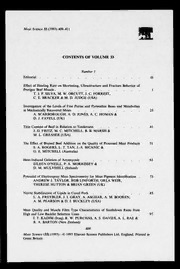
Meat Science 1993: Vol 33 Table of Contents
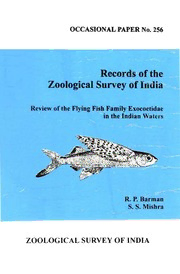
Review of the flying fish family exocoetidae in the Indian waters

Improved Acute Stroke Treatment with Hyperbaric Oxygen Chamber Equipped Ambulances
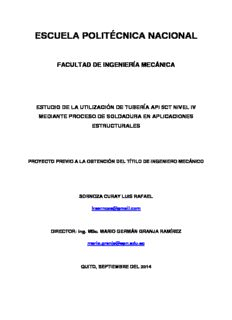
capítulo 2 análisis de soldabilidad de tubería api 5ct
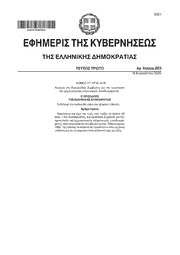
Greek Government Gazette: Part 1, 2005 no. 203
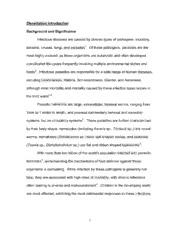
DTIC ADA459045: Characterization and Function of the Inflammatory Response to Infection by a Gastrointestinal Nematode Parasite: New Insights into Protective Th2 Responses
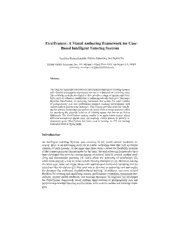
DTIC ADA454585: FlexiTrainer: A Visual Authoring Framework for Case-Based Intelligent Tutoring Systems
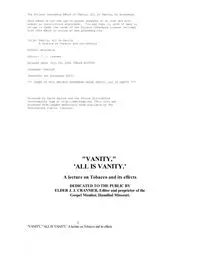
Vanity All is Vanity by J J Cranmer
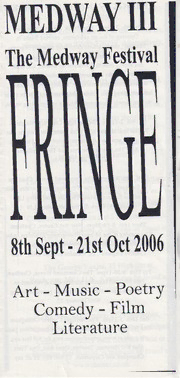
The Medway Festival Fringe 2006 Program

Changes in the Living Arrangements of the Elderly

Introduction au non marxisme
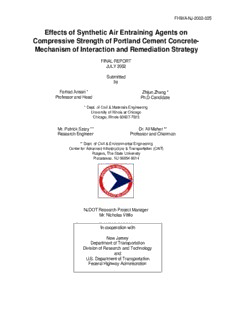
CAIT/Rutgers
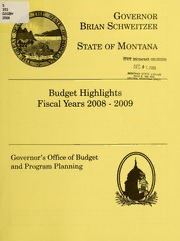
Budget highlights fiscal years 2008 - 2009
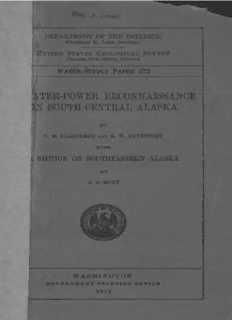
ATER-POWER RECONNAISSANCE IN SOUTH-CENTRAL ALASKA
